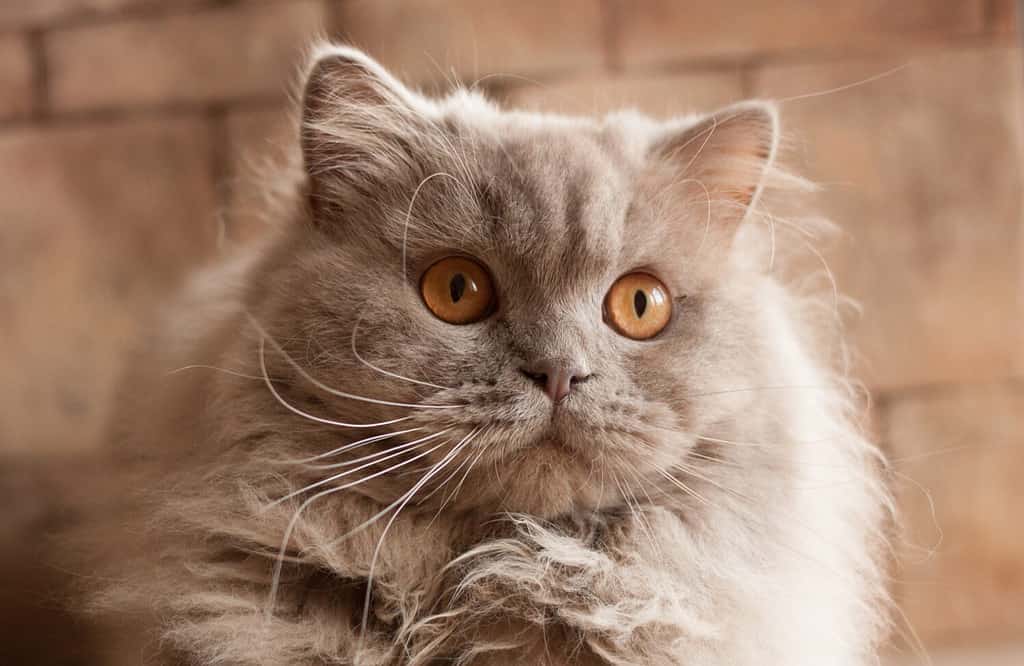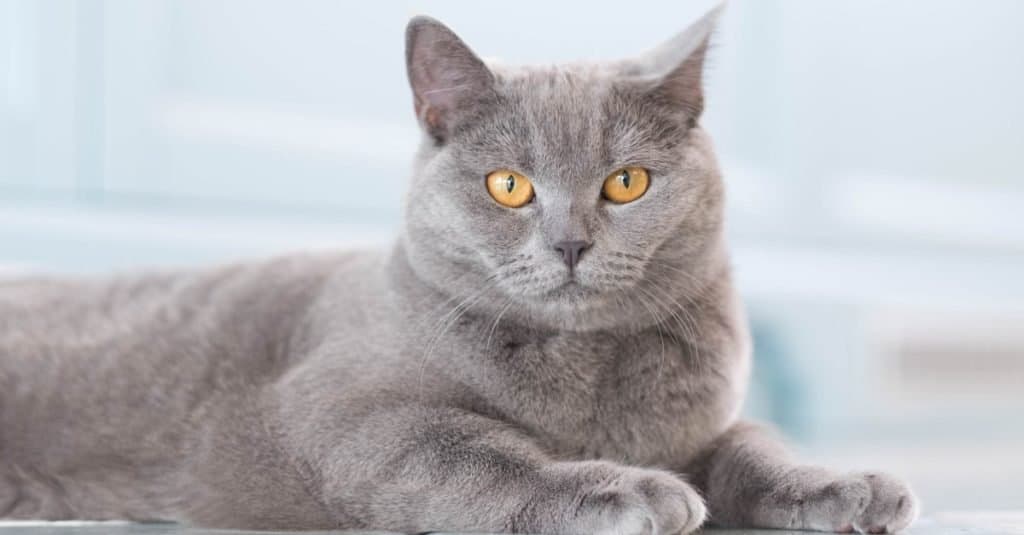The whiskers on your cat may seem cute, and tickly when they give you kisses. However, your cat’s whiskers play a significant role in their life. In this article, you’ll discover how whisker fatigue can affect their extraordinary abilities to navigate the world and why it matters.

Your cat’s whiskers play a major role in their life.
©PippiLongstocking/Shutterstock.com
Why Are Whiskers So Important?
Whiskers are not just a cute accessory that every kitty has. Whiskers play a crucial role in your cat’s life. Your cat’s whiskers come with a component on the tip of them known as ‘proprioceptors’. These ultra-sensitive sensors tell your cat loads of information. For example, they can detect changes in the weather, and the environment, or they can assist them to stalk prey that is lurking in a room with no lighting available.
Whiskers also play a key role in your cat’s ability to communicate with their feline friends. In a way, your feline’s whiskers act as a smartphone. Except, the messages can only be deciphered between your cat, their whiskers, and other kitties.
Without these necessary receptors, your cat misses out on vital information which can lead to an influx in stress. As you know, stress is terrible for humans, let alone a feline who can’t tell you that they are stressed out.
What in the World is Whisker Fatigue?
One factor that can increase stress in your cat is a condition called “whisker fatigue”. It is important to remember that this condition rarely is fatal, and doesn’t require medical treatment. Although, it is always wise to consult a vet first to rule out any underlying conditions.
Whisker fatigue is when your cat’s whiskers become overloaded with information and they struggle to understand it all at once. For instance, if you have the TV going, there’s a major blizzard outside, plus the food bowl keeps bumping into your cat’s whiskers could lead to information overload.
Imagine being in an overcrowded room with every electronic device going all at once. This is the equivalency of how overwhelmed your cat may feel due to whisker fatigue.

Whisker fatigue is when your kitty’s whiskers are overwhelmed with information caused by bumping into their food bowls.
©iStock.com/Volodymyr_Plysiuk
How Can I Tell If My Cat Has Whisker Fatigue?
Are you unsure of if your cat has whisker fatigue? Here are signs to watch out for:
- Placing food from their dish onto the ground and eating it off the floor.
- Food is piled at the bottom of the bowl every time your cat munches on a meal.
- Striking their paw at the food or water dish.
- They appear to be apprehensive about going towards their feeding dish.
- Meowing, crying, or even growling around their feeding dishes.
- Sudden, and random aggression towards other pets especially if they are near the feeding area.
- Refusal to eat. If your cat is at the stage of whisker fatigue where they are not eating and it is leading to weight loss and lethargy it may be time to bring them to a vet.
How Do You Stop Whisker Fatigue?
It may be relieving to know that there are ways to end whisker fatigue. Below are a few ways that you can help prevent or end whisker fatigue in your cat.
Use Wider, or Flatter Bowls
You want to make sure that their bowl allows them to comfortably eat without their whiskers touching either side. You may also want to go for a plate which can provide a happier eating time for your kitty. This is because plates make it a breeze to grab food from it, without their whiskers bumping into the sides.
Don’t Forget To Change Their Water Dish
Changing their water supply is just as important as changing their food dish. Moreover, a kitty water fountain device is strongly recommended to help provide hydration without bumping their whiskers against it. If a water fountain is not within your budget, you can also opt for using dishes that are composed of stainless steel.
Is There Evidence of Whisker Fatigue?
While your cat may have whisker fatigue, there is no science-backed evidence. On the other hand, that does not mean it does not exist in your cat. Whisker fatigue is a new condition that is popping up in feline communities. Typically, it is not found in veterinary classes or textbooks. But, that does not mean that your cat may not bothered by the narrow food bowl they are eating out of.

While Whisker fatigue may not have scientific proof of its existence, it does not mean that it does not exist in your cat.
©Rutina/Shutterstock.com
Can Whisker Fatigue Be Something More Serious?
Whisker fatigue can be easily fixed. However, if symptoms are not getting better after changing their feeding contents, it may be time to visit your local vet. Signs that something more concerning going on than whisker fatigue include:
- Sudden weight loss.
- Becoming aggressive outside of feeding time.
- Isolating themselves, or hiding.
- Lack of interest in playing.
- Loss of interest in cuddling.
- Irritability.
- Change of personality.
- Seizures
- Shaking,
- Loss of fur.
- Constant meowing when they may have never done that before.
- Shortness of breath.
- Rapid or declining heartbeat.
If your cat is displaying any of these symptoms, please consult your veterinarian immediately.

If symptoms of whisker syndrome do not improve, you may need to contact your local veterinarian.
©MELNIKOVA OLGA/Shutterstock.com
Whisker syndrome may not be a medically recognized condition. However, changing their bowls can help remove it altogether.
Thank you for reading! Have some feedback for us? Contact the AZ Animals editorial team.








